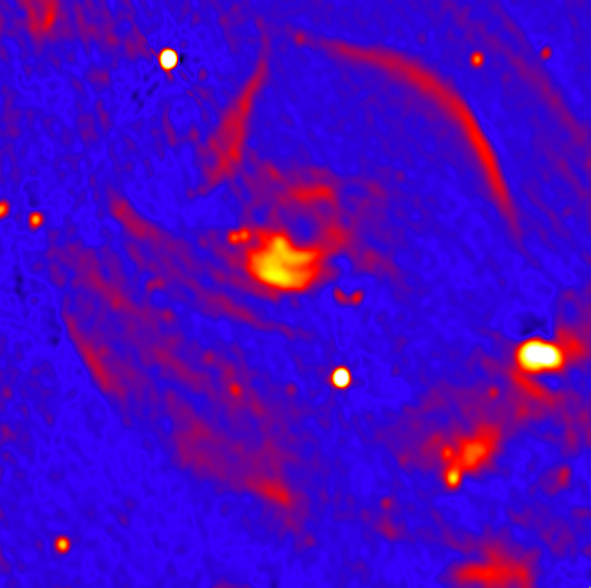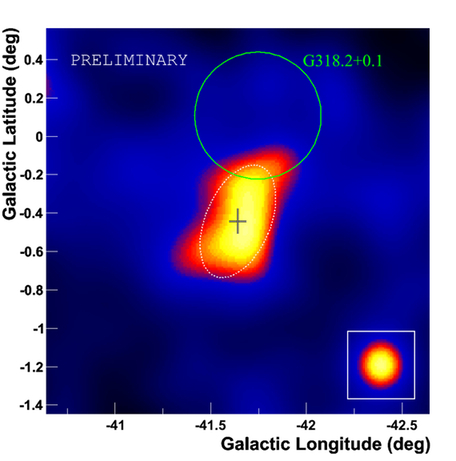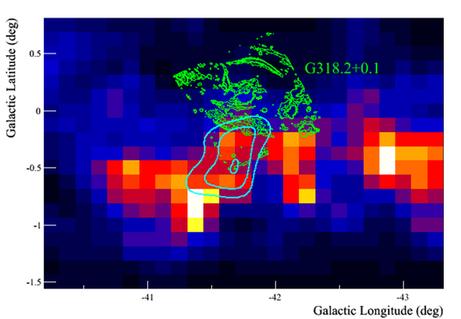VHE gamma rays from the vicinity of the supernova remnant G318.2+0.1
April 2011

The on-going H.E.S.S. Galactic Plane Survey continues to reveal new sources of very high energy (VHE) gamma rays. In particular, recent re-observations of the region around the shell-type supernova remnant (SNR) G318.2+0.1 have resulted in the discovery of VHE gamma-ray emission from an extended region. G318.2+0.1 (top image) is a large diameter (40′′×35′′) shell-type SNR discovered in the Molonglo Observatory Synthesis Telescope (MOST) survey (Whiteoak & Green 1996). The remnant is characterised by two non-thermal filaments in the Northwest and South- east which form two sections of a shell, and a central region of thermal emission which corresponds to a HII region. The SNR also contains hard X-ray sources (Boccino et al. 2001) suggestive of non-thermal electron acceleration. Combining particle acceleration and gas clouds serving as production targets, G318.2+0.1 is a promising target for VHE gamma-ray observations.
The region of interest was observed with the H.E.S.S. telescope array between 2004 and 2010. The dataset - a total of 102 hours - is primarily comprised not of dedicated observations but rather of survey observations of the region and of observations of nearby sources. A highly significant signal - HESS J1457-593 with about 9 standard deviations - is detected (Fig. 1), slightly offset from but overlapping with the remnant. The (rms) source size is about 0.3 degr. by 0.2 degr.
The offset location of the VHE gamma ray source and the remnant - assuming that they are related - could be explained by molecular clouds just outside the remnant, illuminated by cosmic rays accelerated in the remnant. In searching for molecular cloud counterparts, CO radio data from the Dame et al. survey was analyzed. In a velocity range centered around -42 km/s, a 1.8 degr. by 1.1 degr. cloud complex encompassing the VHE gamma-ray source is found (Fig. 2). This velocity corresponds to a distance of either 3.5 kpc or 9.2 kpc; the mass of the molecular cloud is about 3 x 10^5 or 10^7 solar masses, respectively. At a distance of 3.5 kpc and with an angular size of (40′′×35′′), the remnant would have a physical diameter of roughly 40 pc; a similar value of 50 pc is estimated in Boccino et al. 2001. Assuming an ambient density of 1 particle/cm^3, the age of the remnant can then be estimated from its size; one obtains an age of about 8000 years, consistent with a remnant in the late Sedov phase which is an efficient particle accelerator but is already leaking high-energy particles into the ambient medium.
Reference: "Discovery of VHE gamma-rays from the vicinity of the shell-type SNR G318.2+0.1 with H.E.S.S.", H.E.S.S. collaboration, P. Hofverberg et al., to be published in Proceedings of the 25th Texas Symposium on Relativistic Astrophysics, Heidelberg, 2010

